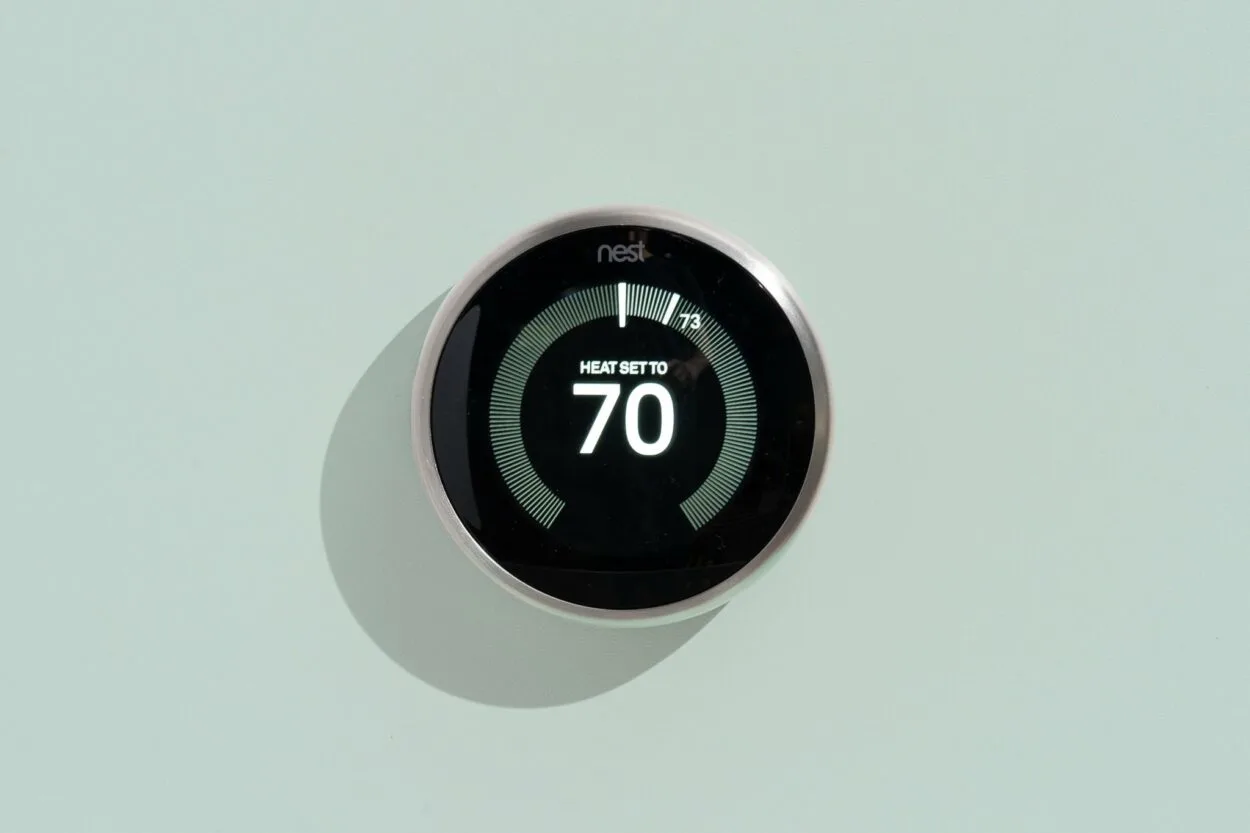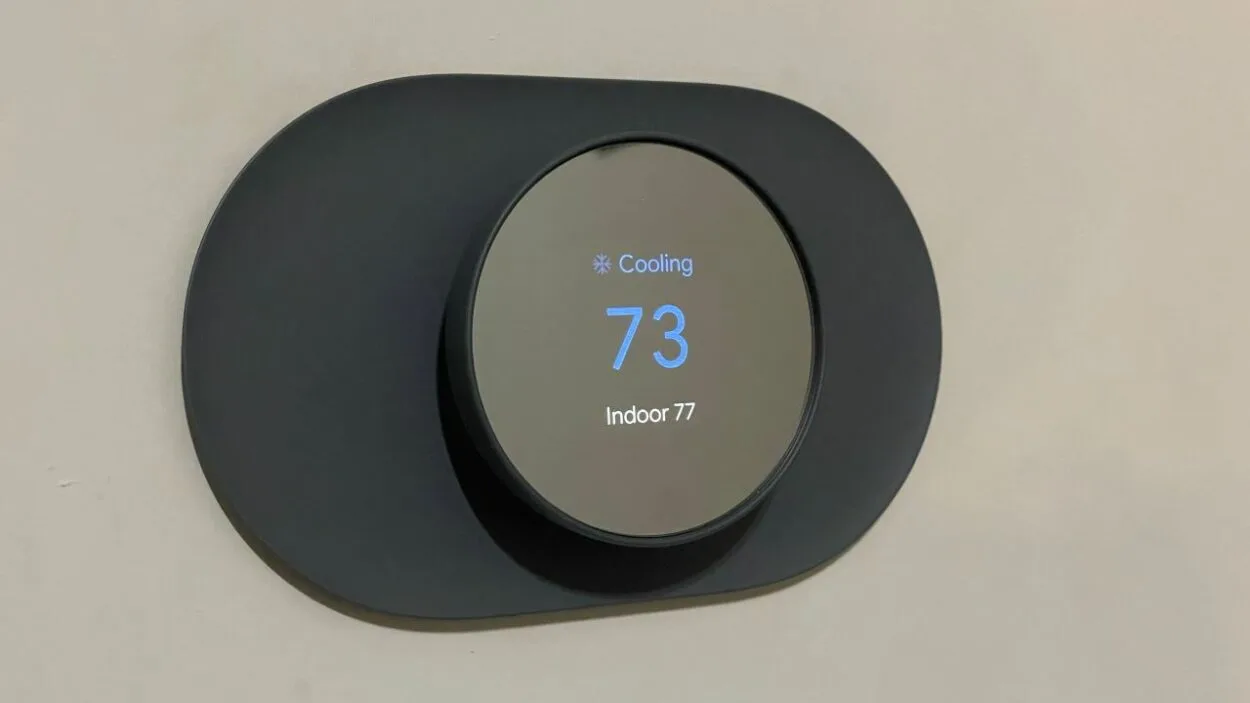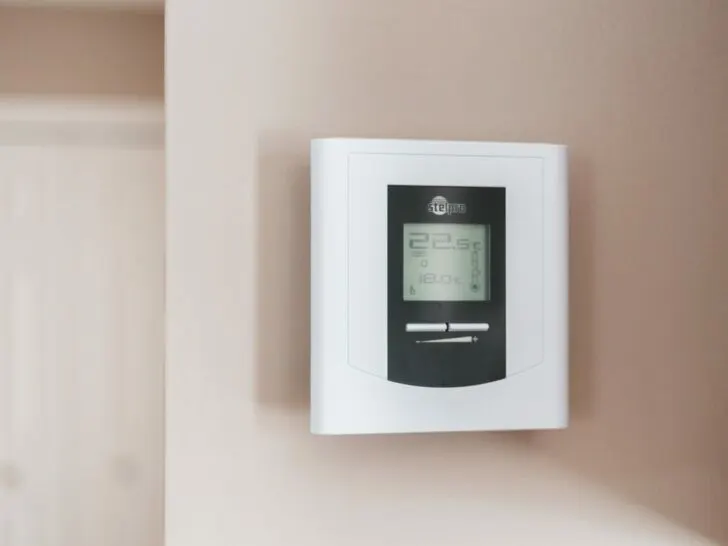To keep the temperature on the thermostat close to the intended setting, the thermostat is a device that turns the HVAC unit ON and OFF.
It is normally located on an interior wall and can only measure the temperature close to the thermostat, not the temperature throughout the entire house.
The red wires that supply power to your thermostat are Rc and Rh. There are many different applications for thermostat wires.
These consist of intercoms, signal systems, heating and air conditioning installations, thermostat controls, remote controls, and several other low-voltage applications.
The RH wire color is not standardized, but most devices utilize a red one. While “red cooling” is mentioned in the RC wire. The RH wire operates the thermostat in a similar manner. It fuels the cooling system for the RC.
Keep reading to learn more about the thermostat wires and how the RH and RC wires are different from each other.
What Is A Thermostat?
The thermostat is a control device that turns on or off the home’s heating system as needed.
It operates by measuring the air temperature and turning on or off the heating elements according to whether the ambient temperature is above or below a set point.
Although there are many various types of thermostats, programmable thermostats are the most prevalent in contemporary homes. This kind of thermostat automatically modifies the temperature in a house.
For instance, a thermostat can turn on the heating to warm up the house if the temperature begins to drop. The thermostat operates to turn off the heating once the inside temperature reaches the predetermined level to keep you from overheating.
There are many different types, sizes, and shapes of thermostats. The two most common types of thermostats are mechanical and digital. These differ in a few crucial ways.
| Types of Thermostats | Description |
| Digital | It has internal elements that can adapt to room temperature precisely and quickly. |
| Mechanical | Usually, two pieces of metal are used to regulate the temperature. |
How Does A Thermostat Work?

In a conventional thermostat, a bimetallic strip—made of two sections of various metals—is fastened together.
The strip functions as a bridge in the circuit that powers your heating system. The heating is typically on, the “bridge is down,” and the strip is supplying power to the circuit.
One of the metals expands more than the other when the strip is heated, causing the strip as a whole to very slightly bend.
It eventually flexes to the point where it opens the circuit. The moment the “bridge is up,” the heating stops working, the electricity shuts off, and the room begins to cool.
The strip cools together with the room and returns to its former shape as it does so. Sooner or later, it re-enters the circuit and restores electrical flow, turning on the heater.
What Is A Nest Thermostat?
The Nest Thermostat is an AI-enabled thermostat that optimizes the heating and cooling of its environment, enabling it to consume energy as needed.
It was developed by Nest Labs and then acquired by Google. One of the most popular categories of smart home appliances is frequently referred to as a smart thermostat.
Over time, the smart thermostat “learns” your tastes and starts to automatically alter the temperature in your house or place of business to suit those demands, ultimately saving you money and energy.
Independent tests revealed that it helped people save 15% on cooling costs and 10% to 12% on heating costs; therefore, it can pay for itself in less than two years.
How Does the Nest Thermostat Work?

The Nest Thermostat has a number of sensors that can measure not only the outside temperature but also other environmental factors including humidity levels.
The thermostat uses all of this information to decide how to create a comfortable environment while utilizing the least amount of energy.
If you are not home, the Nest Thermostat will automatically switch to Eco Temperatures to conserve electricity.
By touching the Settings gear icon, choosing your device, and then selecting Eco Temperatures under the Options menu in the Nest app, you may fine-tune your Eco Temperatures.
Manually changing from heating to cooling and modifying the thermostat are both possible with Nest Thermostat.
You may access your device settings, energy usage information, and schedule preferences using the Google Home app.
Thermostat Wires
The thermostat is one of the most important things in your house; even on the hottest summer days and the coldest winter days, your home may be inhabited. Thanks to the capacity to change the temperature.
12% of American households have a centrally controlled air conditioner, according to the EIA’s Residential Energy Consumption Survey. Temperatures are controlled by smart thermostats in 33 million homes in North America.
The 24-volt cooling power supply is located at the RC terminal, while the 24-volt heating power source is located at the RH terminal.
In a four-wire heat/cool system and a single-stage heat pump system, but not in a five-wire system, the RC and RH terminals are jumpered together.
What Is An RH On A Nest Thermostat?

The “red heating” (RH) wire denotes that this connection is what you need to power the heating system of your air conditioner.
Even your air conditioner has a heating system to maintain a comfortable temperature. Although live electrical wire is often described as being “red,” this doesn’t make it dangerous or require that it be red.
Instead of your cooling system, the Rh wire links to your heating system. If you have a twin transformer configuration, this wire can be read without an “H” on it.
It uses only 24 volts, which is insufficient to shock you. And the wire isn’t always red, to add to that. The RH wire color is not standardized, but most devices utilize a red one.
What Is An RC On A Nest Thermostat?
RC wire uses the term “red cooling.” The RH wire, which powers the thermostat, operates similarly. It fuels the cooling system for the RC.
Your transformer’s 24-hour AC electricity comes from red lines, more precisely Rc wires.
Only dual transformer systems or air conditioning systems use RC wires. Systems featuring a cooling and heating transformer are referred to as dual transformer systems.
C and Rc wires differ from one another. You must adhere to the prior thermostat’s wiring exactly while installing this one.
How Do RH And RC On A Nest Thermostat Differ From Each Other?
The thermostat generally receives power from one or more red wires and it will have a red Rc wire if it is solely used for air conditioning.
There will be a red Rc wire and a red Rh wire for HVAC systems. Despite the fact that both wires are red, they cannot be switched.
Rc and Rh stand for red-cool and red-heat, respectively. Certain hybrid heating and cooling systems need a jumper between Rh and Rc if you only have a single red wire; however, this may depend on your thermostat.
The wire from the transformer, which is referred to as the RC wire, travels directly to the RC terminal if the air conditioning thermostat uses a single transformer to power both the heating and cooling systems.
Despite the fact that there is an RH terminal, there isn’t a second RH wire. The RH wire is another name for this cable.
Alternatives To Thermostats
Ecobee SmartThermostat

One of our preferred smart home accessories is the Ecobee Smart Thermostat. The incredibly smart remote sensors, which independently measure temperature and detect motion, are largely to blame for this.
These sensors can help your thermostat understand the temperature in your house better.
Thanks to integrated microphones with far-field voice recognition, the Ecobee SmartThermostat has Amazon’s Alexa voice assistant preinstalled.
Emerson Sensi Touch

The Emerson Sensi Touch is a smart thermostat with a huge, color touchscreen display that has a stunning appearance, but it delivers more than just style.
With this thermostat, you can get up and running quickly; thanks to features like a backlight, a built-in level, and spring-loaded wiring connectors.
Scheduling and geofencing features are examples of smart features that can reduce your heating and cooling when you’re away and restart your settings when you get home, thus saving you money.
Conclusion
- The Nest Thermostat performs standard thermostat functions while adding extra functionality. It utilizes WiFi to connect to your home’s internet network, and a phone app can be used to control it. Alexa also allows you to use voice commands to change the temperature.
- Red cooling merely refers to RC nest wire, which is no different. Although there is no set color for the wire, it is typically red. More significantly, the “R” signifies that the cable and terminal are hot; it is a live electrical line.
- Means is what RC wire stands for, and you can probably guess what RH stands for. The “R” still denotes that the connection is a hot wire and terminal one, while the “H” stands for heating. The heating portion of the thermostat is controlled by the RH wire, which is connected to the RH terminal.

